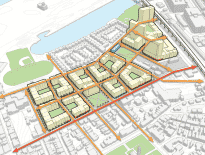The number of Americans filing for unemployment benefits fell more than expected last week, reinforcing views of labor market strength that could encourage the Federal Reserve to raise interest rates soon.
Another report on Thursday showed a modest improvement in manufacturing activity in the mid-Atlantic region this month amid rising shipments from factories. But weak new orders and shrinking order books suggested the manufacturing malaise was far from over.
Initial claims for state unemployment benefits dropped 4,000 to a seasonally adjusted 262,000 for the week ended Aug. 13, the Labor Department said. Claims for the prior week were unrevised.
Economists polled by Reuters had forecast initial claims slipping to 265,000 in the latest week.
Claims have now been below 300,000, a threshold associated with a strong labor market, for 76 straight weeks. That is the longest such stretch since 1973, when the labor market was much smaller.
The U.S. dollar extended losses after the data, while prices for U.S. Treasuries were largely unchanged. U.S. stock futures pared losses slightly.
The labor market is now viewed as either at or near full employment, suggesting limited scope for more declines in claims. Labor market buoyancy, marked by robust hiring in the last two months and diminishing slack, could prompt the Fed to raise interest rates despite low inflation and sluggish economic growth in the first half of the year.
New York Fed President William Dudley, an influential policymaker at the U.S. central bank, said on Tuesday it was “possible” to hike rates at the Fed’s Sept. 20-21 policy meeting.
But the minutes from the July 26-27 meeting, which were released on Wednesday, showed Fed policymakers were divided on the urgency of a rate hike amid concerns about benign inflation.
The minutes also noted that “some other members (of the Fed’s rate-setting committee) anticipated that economic conditions would soon warrant taking another step in removing policy accommodation.”
The Fed raised its benchmark overnight interest rate in December for the first time in nearly a decade.
Claims Up In Survey Week
The four-week moving average of claims, considered a better measure of labor market trends as it irons out week-to-week volatility, rose 2,500 to 265,250 last week. The claims data covered the survey week for the August nonfarm payrolls report.
The four-week moving average of claims increased 7,750 between the July and August survey periods, suggesting another month of strong job gains. The economy created 255,000 jobs in July, adding to the 292,000 positions gained in June.
In a separate report, the Philadelphia Federal Reserve said its business conditions index increased 5 points to a reading of 2 in August as more companies reported an increase in shipments. August marked the third positive reading for the index this year.
Details of the survey were generally weak, with a measure of new orders contracting after surging in July. There were continued declines in factory employment, with the length of the work week shrinking further.
But shipments rose and manufacturers were also asking higher prices for their goods while appearing to pay more for raw materials.
Manufacturing remains constrained by the delayed pass-through of the U.S. dollar’s rally between June 2014 and December 2015. The sector, which accounts for 12 percent of the U.S. economy, has also been undermined by an inventory bloat as well as lower oil prices, which have contributed to a sharp downturn in business spending.
There are, however, tentative signs that the energy drag on business investment could be fading. The Fed reported on Tuesday that oil and gas drilling surged in July, notching a second straight monthly gain. Oil drilling firms have increased the number of rigs in recent months.





